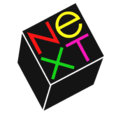





Competition is a good thing. As more players enter a market, competition spurs innovation, which results in better products delivered at greater efficiency. But if that's the case, why don't we see more competition in the commercial operating system market?
Throughout the 80's and 90's, there were far more vendors offering their own OS, but that competition didn't seem to really benefit consumers. Instead, the choices offered by IBM's OS/2, Microsoft's Windows, Apple's Mac, and other products sold by Amiga, Atari, Be, NeXT, and various DOS vendors only seemed to create uncertainty and confusion for customers.
Today, there are only two significant commercial desktop platforms available to consumers: Microsoft’s Windows XP and Apple’s Mac OS X. Why has the market whittled away consumer choice in computer platforms?
This article presents an introduction to operating system platforms, and set up a series examining the historical rise and fall of platforms as tech companies fought to the death to assert their technologies.
Later, I'll sift through the history of platforms to find clues that indicate where Apple and Microsoft are going, and highlight the challenges both face in developing new iterations of their software.
What is a Platform?
In computing, a platform is a basis for developers to build upon. A platform can describe hardware, such as the industry standard PC platform, or software, such as Sun's Java platform, which can be deployed to run on most any hardware.
 Apple is working to deliver one version of the Mac OS X platform that supports 32/64-bit PowerPC Macs, as well as 32/64-bit Intel Mac hardware. Mac OS X Tiger currently comes in two flavors, one for PowerPC and one for Intel. However, software built for the Mac OS X platform can run on any Mac, using the same Universal Binary package. Apple has created a single, unified platform.
Apple is working to deliver one version of the Mac OS X platform that supports 32/64-bit PowerPC Macs, as well as 32/64-bit Intel Mac hardware. Mac OS X Tiger currently comes in two flavors, one for PowerPC and one for Intel. However, software built for the Mac OS X platform can run on any Mac, using the same Universal Binary package. Apple has created a single, unified platform.Microsoft maintains different Editions of Windows for different hardware platforms: the most common is the 32-bit Windows XP, but Microsoft also ships a 64-bit Itanium version and a different 64-bit PC x64 version (for AMD64 PCs). Microsoft also maintains a Mobile version of the related Windows CE, and Microsoft's Xbox 360 game console also runs a version of Windows, ported to specialized hardware using a PowerPC processor. Software for all these flavors of Windows must be targeted specifically to run on one type of hardware.
Since the definition of a platform is flexible, when making comparisons it helps to be specific. Calling "Windows" a platform isn't very precise, because Microsoft has several families of Windows products, and each represents a significantly different platform. Further, referring to the 'PC platform' isn't very useful any more, particularly since Apple's latest Macs are now functionally identical to PCs running Windows.
In comparing the rise and fall of platforms, these articles will consistently refer to a platform as a unique combination of hardware and software.
Introducing a New Platform
Nearly every computer that arrived in the 80's ran its own operating system and required specially written applications, although many offered compatibility modes that allowed them to also run software designed for other systems.
 Some consumers hoped to find a system that could run everything; a previous article explained why this wouldn't necessarily even be a good idea. The Utopian System that Runs All Software Imaginable Myth presents several examples of compatibility modes and demonstrated why the ability to run other software often wasn't enough to sustain a platform. One notable example was the Atari ST, which could run both DOS and Mac software, as well as its own.
Some consumers hoped to find a system that could run everything; a previous article explained why this wouldn't necessarily even be a good idea. The Utopian System that Runs All Software Imaginable Myth presents several examples of compatibility modes and demonstrated why the ability to run other software often wasn't enough to sustain a platform. One notable example was the Atari ST, which could run both DOS and Mac software, as well as its own.Ideally, a computer system needs a specialized operating system and applications that are designed to take the greatest advantage of its hardware.
Introducing a new platform is a lot of work; the initial design is the easy part. Creating a platform requires building support from third party developers, which in turn requires ongoing development work to accommodate developers’ needs.
As the requirements of operating systems became more sophisticated, the task of maintaining a ballooning code base became increasingly complex and difficult. Platform developers were not only tasked with maintaining their system, but also faced pressure to constantly innovate and adopt new technologies.
Those two sets of efforts have often worked at cross purposes: platform maintenance is more difficult if the platform is changing, but platform maintenance becomes even more difficult if the platform falls behind in the technology race.
Maintaining Platforms
Apple's release of the first Macintosh took nearly half a decade of prior development, and was only possible because the company was funded by steady profits from Apple II sales.
Consider the work Amiga, Atari, Be and NeXT needed to accomplish in order to have an initial product to sell. Each ran through millions in development costs simply to launch a product.
Developers quickly found out that delivering a platform is the easy part; maintaining a development platform is a lot more work. Every five years, a new epoch of computing ushered in a set of new capabilities that each platform was pushed to deliver.
As platforms became increasingly sophisticated, vendors were pressed to compete in delivering new hardware and new software that could keep up with the pace of general computing. Those that couldn't maintain feature parity lost sales and were quickly trampled out of existence.
The result has created a market where hardware vendors have delegated operating system development to a single vendor: Microsoft. Only Apple has managed to defy convention and maintain its own platform combination of hardware and software.
Across the last three decades are scattered clues for discovering why some platforms are successful while similar ventures fail, why successful platforms can simply run out of steam, and what ushers in new waves of innovation that serves to kill off those unable to keep up the pace.
The next article will look at the historical generations of consumer computing platforms and how different vendors struggled to survive.
This Series

| | Comment Preview
 Read more about:
Read more about:

 Send |
Send |

 Subscribe |
Subscribe |
 Del.icio.us |
Del.icio.us |
 Digg |
Digg |
 Furl |
Furl |
 Reddit |
Reddit |
 Technorati
Technorati
Click one of the links above to display related articles on this page.
Platform Death Match
Friday, August 25, 2006






Ad









